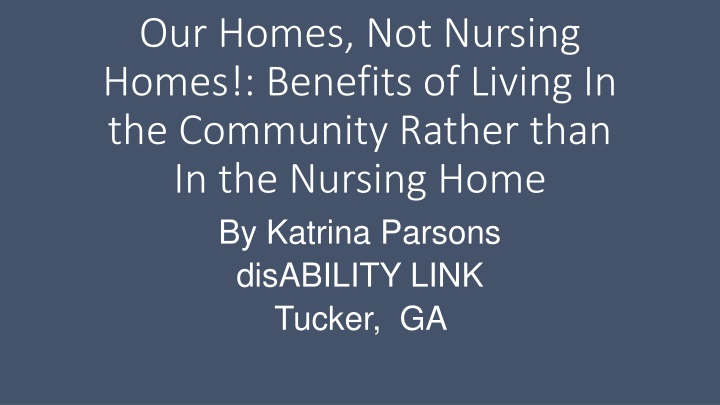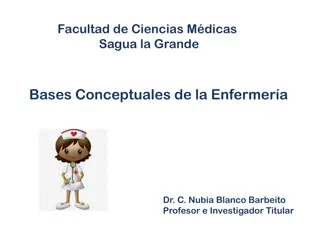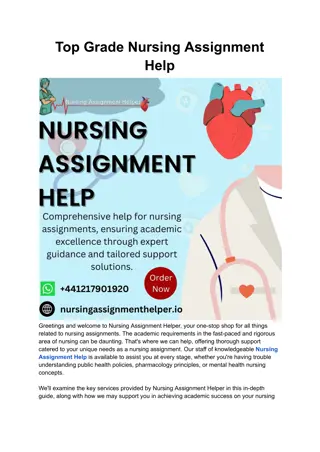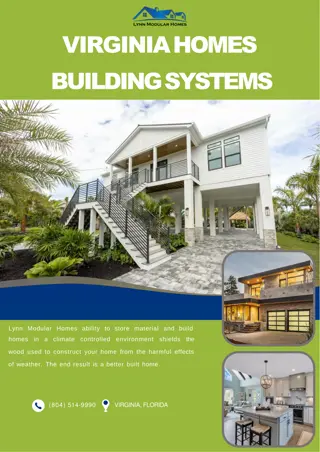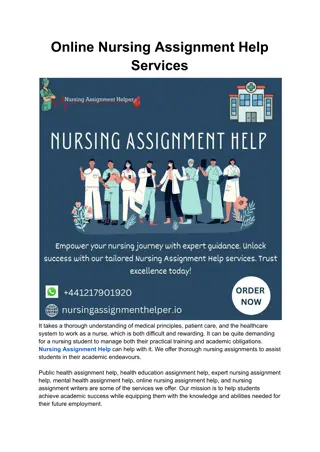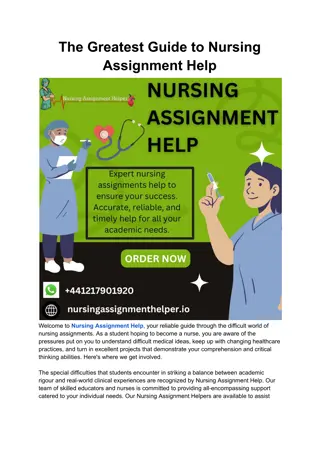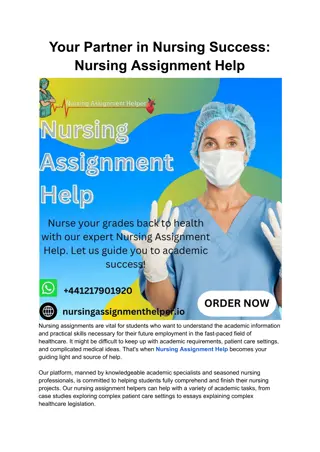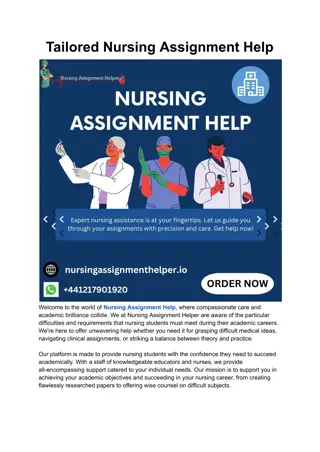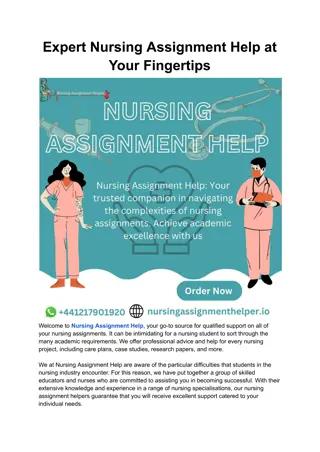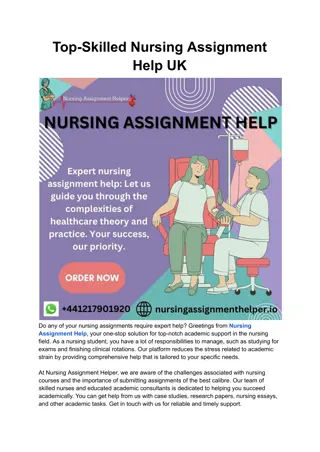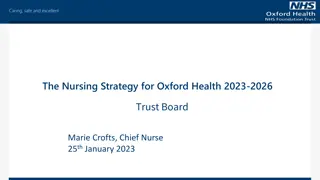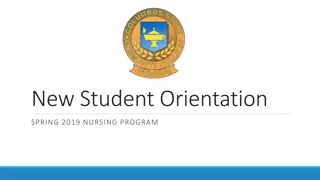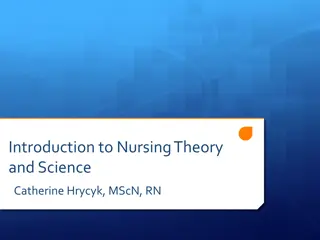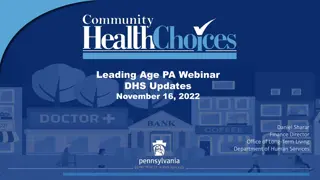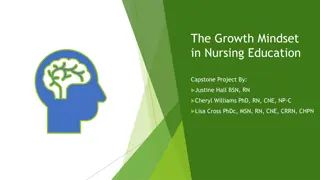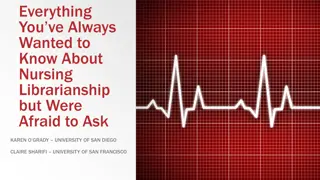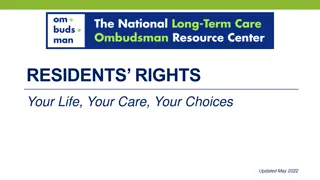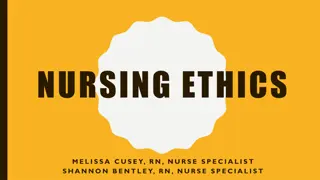Benefits of Living in the Community: Our Homes vs Nursing Homes
Living in the community offers numerous advantages over residing in nursing homes, as highlighted by the Olmstead Act case and the importance of community integration for individuals with disabilities. The decision by the Supreme Court emphasized the need to provide community-based services to persons with disabilities when appropriate, not only promoting inclusivity but also enhancing overall well-being. Understanding the differences between nursing homes and community living is crucial in supporting individuals to lead fulfilling lives while receiving necessary care and assistance.
Download Presentation

Please find below an Image/Link to download the presentation.
The content on the website is provided AS IS for your information and personal use only. It may not be sold, licensed, or shared on other websites without obtaining consent from the author.If you encounter any issues during the download, it is possible that the publisher has removed the file from their server.
You are allowed to download the files provided on this website for personal or commercial use, subject to the condition that they are used lawfully. All files are the property of their respective owners.
The content on the website is provided AS IS for your information and personal use only. It may not be sold, licensed, or shared on other websites without obtaining consent from the author.
E N D
Presentation Transcript
Our Homes, Not Nursing Homes!: Benefits of Living In the Community Rather than In the Nursing Home By Katrina Parsons disABILITY LINK Tucker, GA
Introduction Everyone will become disabled if they re lucky enough. Aging is a privilege. Far too few of us get the opportunity to be a ripe old age. And if you do get the opportunity, you will likely become disabled. (Maria Town, President and CEO of the American Association of People with Disabilities).
Community Integration for Everyone Olmstead Act: The story of the Olmstead case begins with two women, Lois Curtis and Elaine Wilson, who had mental illness and developmental disabilities, and were voluntarily admitted to the psychiatric unit in the State-run Georgia Regional Hospital. Following the women's medical treatment there, mental health professionals stated that each was ready to move to a community-based program. However, the women remained confined in the institution, each for several years after the initial treatment was concluded. They filed suit under the Americans with Disabilities Act (ADA) for release from the hospital.
The Decision On June 22, 1999, the United States Supreme Court held in Olmstead v. L.C. that unjustified segregation of persons with disabilities constitutes discrimination in violation of title II of the Americans with Disabilities Act. The Court held that public entities must provide community-based services to persons with disabilities when (1) such services are appropriate; (2) the affected persons do not oppose community-based treatment; and (3) community-based services can be reasonably accommodated, taking into account the resources available to the public entity and the needs of others who are receiving disability services from the entity.
Olmstead Photo: Sue Jamieson, Lois Curtis and Elaine Wilson.
What is a Nursing Home? A nursing home (or sometimes called nursing facility) is a residence for people with severe physical disabilities or psychological impairments that need total care with activities of daily living (ADL s) such as grooming, cooking, cleaning, transferring, bathing, and hygiene
Nursing Home Statistics Average age- 80 and older More women than men Majority of residents are single Dementia- common disability found in residents even if not primary ~ 25% of people admitted stay there for three months or less About of them stay for a year or more About 20% of them stay for 5+ years
Bringing it to Life Jimmy s story Early age Working Transitioned Photo is Texas Adapt members
Services Provided in a Nursing Home Skilled Nursing Care Wound Care Breathing Treatments Physical, Occupational, or Speech Therapy Respite Care Orthopedic Care IV Care Assistance with ADL s
Risk Factors for Going into a Nursing Home Age Little or no resources Severe physical or mental disability Photo is a patient in a bed surrounded by medical personnel
Cons and Safety Issues of Nursing Homes Slow responses to calls Poor food quality Staff shortages Little social interaction Sleep disruptions Incorrect Medical Care This place is terrible. They won t take care of my catheter . Abuse and Neglect High Infection Rates
Nursing Homes and COVID-19 1,204,959 confirmed cases (according to Centers for Medicaid and Medicare) 155,840 deaths More confirmed cases among staff than residents First identified COVID case in the US was at a nursing home in Washington State Reports of nursing home staff taking stimulus checks from residents and using them to pay for their stays Reports of vaccines that were being distributed to the nursing homes at first were given to wealthy donors instead of the residents
Programs that our CIL Uses to Transition in the Community Georgia Money Follows the Person (MFP) Georgia Nursing Home Transition (NHT) Georgia Independent Care Waiver Program (ICWP)
Services that Georgia MFP Provides Housing Search Furniture and other household furnishings Moving Expenses Security and Utility Deposits
Services that Georgia MFP Provides (Cont.) Caregiver Supports and Education Vehicle Adaptations Transportation from the Nursing Home Supported Employment
Services that Georgia NHT Provides $2000 budget limit 1stmonth s rent Accessible/Adaptive Equipment Electricity
HCBS Waivers in GA: A Preferred Alternative to Nursing Homes Independent Care Waiver Program (ICWP) Community Care Services Program (CCSP) Service Options Using a Community Waiver (SOURCE) NOW (New Options Waiver) Comprehensive Supports Waiver Program (COMP) Katie Beckett Georgia Pediatric Program (GAPP)
Services Waivers Provide Support Coordination/Case Management Personal Support Services (Personal Care Attendant) to help with ADL s. Medical Supplies Home Modifications Emergency Response Systems Home Delivered Meals Skilled Nursing Respite Adult Day Program
Waivers include Personal Support Services In GA, Personal support aides are not paid to provide 24 hour individual care. Crucial that individuals have informal support from family and close friends. On average, an individual living out in the community with the waivers actually gets about 65-70% more care needed than if the individual was in a nursing home Photo is of a wheelchair user in front of her home computer
Cost Savings In Georgia, the average cost of a private room in a nursing facility is $7,173 per month or $86,076 per year, which is below the national average. The average cost of at home care is $3,183 per month or $45,756 per year, which is below the national average $40,000 per year difference
Support for Caregivers Caregivers can experience extreme burnout Caregivers should reach out to others for support Should practice self-care Schedule down time Be an advocate for the people that they are caregiving
Resources for Caregivers Elizabeth Dole Foundation National Alliance for Caregiving Rosalynn Carter Institute of Caregiving National Respite Coalition Network AARP Christopher Reeves Foundation
Success Stories An individual who discharged at the beginning of the COVID -19 pandemic An individual who is doing more activities he likes to do since out of the nursing home
Final Thought Living in the community is more affordable, preferable, and provides more choices for people with severe disabilities.
References https://www.christopherreeve.org/living-with-paralysis/for- caregivers/tips-and-resources-for- caregivers#:~:text=The%20Family%20Caregiver%20Alliance%20(FCA, %2D877%2D333%2D5885. https://data.cms.gov/covid-19/covid-19-nursing-home-data https://www.advocate.com/politics/2020/7/13/disabled-advocate- everyone-will-become-disabled-if-theyre-lucky https://www.seniorliving.org/nursing-homes/costs/ https://www.nytimes.com/2020/05/17/opinion/nursing-home- coronavirus.html http://ucpgno.org/wp-content/uploads/2015/03/reid-with-text.jpg
Contact Information Katrina Parsons kparsons@disabilitylink.org
